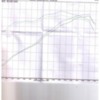quote:
Originally posted by JFFR:
I agree that there are other power losses on an engine such as the water pump, alternator and pulleys. What I question is why the 22% power loss through the ZF is the general number that seems to be used. As horsepower goes up so does the power loss and I just can't see this as being a linear number. I don't have any engine dyno numbers for my new stroker engine yet, but when this project is done, I should have both engine and chassis dyno numbers. That should give me a pretty good idea of what is happening. I have heard from that the ZF power loss is about 80 horsepower. If there are any mechanical engineers on here I would love to have this explained to me.
I think it is important to understand what power terminology means in the context of rotating equipment.
Power (as in horsepower) is the relationship of amount of work done over a period of time.
Work can be defined as a mass moved a vertical distance against gravity. One pound lifted 1 foot is one lb-ft. An example of power can be one pound lifted one foot (work) in one minute: 1 lb-ft/minute (power). James Watt figured out, through experimentation, that a horse could lift 33,000 lb-ft / minute. One horsepower.
Instead of lifting mass against gravity (work), this same resistance to movement can be expressed in a rotational sense as torque.
A transmission, accessories, and internal engine friction provide resistance to rotational forces in terms of lb-ft (torque). This would be pretty much constant assuming that the gear oil is warm and at a constant temperature.
When you factor in RPM, then the amount of parasitic horsepower loss can be calculated by the formula of P = (lb-ft * rpm) / 5252. It is the formula for calculating horsepower of a rotating machine.
As you can see, power loss from a transmission and accessories cannot be expressed as a single horsepower figure or a general percentage figure. Rating the parasitic loss of a 500 hp motor and a 300 hp motor as 20% gives you a very different figure, but nothing has changed in the drivetrain. This why a general percentage figure is inaccurate.
To say that a parasitic loss is 80HP, without stating the RPM at which this loss occurs is also inaccurate. It could be 10 hp at low RPM, an 80 hp at high RPM.
What is really needed is a dyno test of an engine and transmission without the engine running. Just an electric motor turning the system and a measure of the torque it takes to turn at particular rpm. It would only be accurate to state the parasitic drivetrain loss as torque, or horsepower at a particular RPM.
Another way to do it would be to do a dynostand test of the engine only, and then a chassis dyno test after getting the engine installed in the car.



